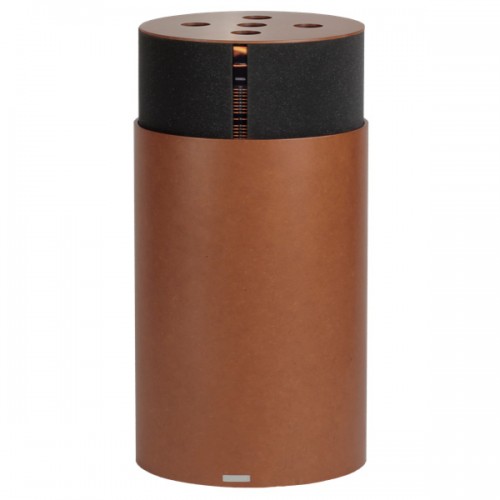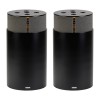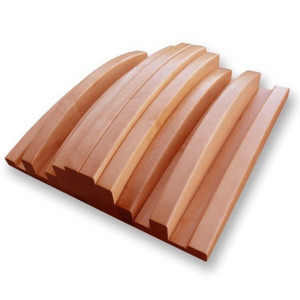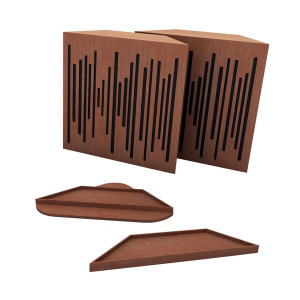Product Description
The Vicoustic Vari Bass trap is a versatile, tunable Helmholtz resonator. It’s ideal for targeting deep bass frequencies in your room, and efficiently absorbing them. The Vari Bass excels at treating problematic room modes, which are natural resonances governed by your room’s geometry.
Room modes distort your low frequency response. Modes cause peaks at some frequencies (making them sound louder), nulls or dips at other frequencies (making them sound quieter), and modal ringing (where some frequencies take much longer to decay than others). This reduces listening clarity and creates problems like “one note bass”, where all bass frequencies sound basically the same regardless of pitch.
Room modes and other bass problems below 100 Hz require special tuned bass traps to treat effectively. Unless you want to dramatically shrink your room, you can’t treat a 50 Hz room mode using only porous broadband absorption (like fiberglass, rockwool or acoustic foam). To treat these deep bass problems you need tuned bass traps. These include tuned membrane / panel absorbers, and Helmholtz resonators like the Vicoustic Vari Bass.
But most tuned bass traps have a fatal flaw. Because room modes are governed by the geometry of your room, tuned bass traps usually have to be custom specified to target a modal frequency with maximum efficiency.
The tunable Vari Bass trap solves this problem.
How to use the Vari Bass Helmholtz resonator
The simplest way to treat a problematic low frequency in your room is to place a Vari Bass in the corner, then rotate the wooden top until you hear it start to affect the frequency you’re targeting.
If you want to be more scientific, you can use acoustic measurements to find the exact frequency that’s causing you grief. Then, tune the Vari Bass to target it. You can accurately target frequencies from 50 Hz to 100 Hz.
A visual scale is included so you can see which frequencies the Vari Bass trap is absorbing as you tune it.
Unlike broadband porous absorbers, which need to be placed a distance from the wall to absorb low frequencies, Helmholtz resonators act on the pressure component of the sound wave. This means you should place Vicoustic Vari Bass traps where the sound pressure is maximum (right against the edges of your room). Corner placement is ideal, especially in the tri-corners where your floor and walls (or ceiling and walls) meet.
How the Vari Bass trap works
The Vari Bass Helmholtz trap operates using three main principles:
1. Variable frequency absorption by Helmholtz resonance (tunable).
2. Absorption by a piston system through the interaction of the air chamber and rubber isolation in the device.
3. Porous absorption (broadband acoustic foam) to widen the bandwidth and absorb harmonic frequencies.
Helmholtz resonance simply means air resonance in a cavity. It’s the same thing that happens when you blow across the opening of an empty bottle.
Like all Helmholtz resonator absorbers, the basic form of the Vari Bass is a resonant air cavity with narrow openings. During resonance, energy is absorbed through friction when high velocity sound particles are forced through the openings (the five tubes in the Vari Bass).
The top section of the Vari Bass contains five tube cavities surrounded by absorption (high density acoustic foam). Connected to the tubes is a larger air cavity, which shrinks or expands as you tune the resonant bass trap.
The cavity of a Helmholtz resonator can be accurately tuned to a specific resonance. While most Helmholtz traps are built with a fixed resonant frequency, the Vari Bass lets you tune it by adjusting the size of the resonant cavity.
Helmholtz resonators provide high efficiency absorption over a relatively narrow frequency range, so they are ideal for targeting low frequencies that are impractical to tame using porous absorption.
However, the bandwidth of a Helmholtz resonator can be widened by adding porous absorption inside the resonant air chamber. This is the purpose of the sound absorbing foam in the Vari Bass. The acoustic foam is also important for absorbing frequencies over 100 Hz, helping reduce the energy of harmonic modes. While the fundamental frequency of the Vari Bass (which you can tune) is absorbed by Helmholtz resonance, the harmonics of the fundamental frequency are absorbed by the acoustic foam.
The combination of these absorption methods means the Vari Bass does not only absorb energy of the acoustic mode it’s targeting. Acoustic testing done by Vicoustic and Salford University demonstrated that the Vari Bass actually distributes low frequency energy to other frequencies nearby, modifying the Q factor of the room mode it’s tuned to [1]. Vicoustic found that the amplitude (sound pressure) difference between peaks and nulls was reduced when the Vari Bass was added to a test room, resulting in an overall flatter low frequency response (a tighter, more even sound in the low end).
Vicoustic Vari Bass traps are especially useful in critical listening rooms where the low frequency response affects your ability to accurately monitor and mix. This applies to mixing rooms, mastering studios and recording studio control rooms.
The Vari Bass Helmholtz resonator can also be put to great use in your hi-fi room or home theater. If your goal is to optimize your room for high fidelity audio playback, targeted bass absorption is often the critical finishing touch. If certain room modes are causing your grief, tunable bass traps like the Vari Bass can take your listening experience to the next level.
If you’re looking to treat your whole room, click here for your personalized Vicoustic room treatment plan. We can assess your room and design a custom-fit acoustic treatment kit just for you.
[1] J. Castro, T. Silva, B. Fazenda, “Vari Bass – Vicoustic Research & Development”, Vicoustic press article, 2012











Reviews
There are no reviews yet.